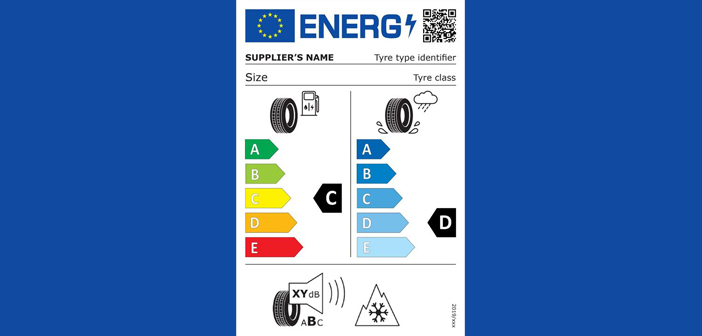Nokian Tires and the European Tyre & Rubber Manufacturers Association (ETRMA) are among the organizations to have lent their support to the newly agreed review of the 2009 EU Tyre Labelling Regulation.
Nokian said that winter tire consumers will benefit from the revised label’s information concerning grip on snow and ice. ETRMA has welcomed the fact that the proposed new text will address shortcomings of the existing regulation, including the lack of market uptake of high-graded tires and low market-surveillance activities in some EU member states.
A political agreement was reached in late-November regarding a new labeling regulation that will update the current label from May 2021 onward. It will also introduce the option of a pictogram for snow and/or ice performance, based on a European Commission proposal from May 2018. The text of the new regulation must be approved by Council and the European Parliament and validated in all EU languages before it can be formally adopted and published in the EU Official Journal.
Seven years after the original tire label’s implementation, ETRMA believes that the slow market uptake of high-grade tires, as demonstrated by the European Commission’s impact assessment and the ETRMA-commissioned Lizeo study, indicates that limited awareness surrounding the label persists and that the label system needs to establish itself further to deliver its full potential.
ETRMA says it therefore welcomes the inclusion of improved surveillance through sanctions and penalties, increasing the visibility of the label and introducing stronger obligations for member states. Further, the Product Information Database should strengthen the information chain between tire manufacturers and authorities. It also supports a renewal of the label’s appearance to include a QR code, as well as logos indicating whether the tire is suitable for use in snow and/or ice conditions.
Meanwhile Nokian believes that the new labels make it easier to compare tire models and will help online shoppers.
“The biggest problem so far has been that not all tires marketed as winter tires are suitable for all winter conditions,” said Jarmo Sunnari, manager of Standards, Regulations and Approvals for Nokian Tires. “Tires designed for the central European winter are completely different from Nordic winter tires [where ice grip is more important]. Wet grip and ice grip are mutually exclusive characteristics; the consumer may end up purchasing the wrong tires if the information on the label is not right.
“The information on the current tire label was misleading to Nordic winter tire customers, whereas in Central Europe the dilemma was not so grave,” he continued. “The new ice grip marking will distinguish tires that are suitable for Nordic countries from other winter tires. The snow grip marking will be allowed for tires with snow performance high enough for the Central European winter.”
“The review is a positive step toward an ambitious, forward-looking Tyre Labelling Regulation,” added ETRMA secretary general Fazilet Cinaralp. “The European tire industry particularly recognizes the benefits of the tire label in creating healthy competition between manufacturers to produce the highest performing tires and informing consumers.”
ETRMA also agrees with the European Commission’s commitment to the development of a suitable and reliable test method to measure tire tread abrasion before assessing the feasibility of adding this information to the label. The process is still in its infancy and needs to be completed before any measure can be introduced in this – or other – regulations, according to ETRMA.
“The European tire industry is fully engaged in the environmental challenges of tires, including the need for development of a reliable test method to measure abrasion performance, a work already initiated by the industry,” concluded Cinaralp. “Our ambitions are high, and we remain devoted to providing technical solutions that respond to societal needs.”



